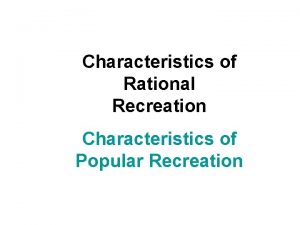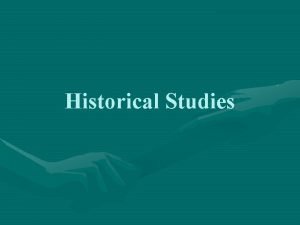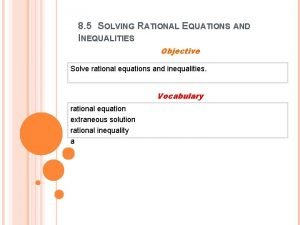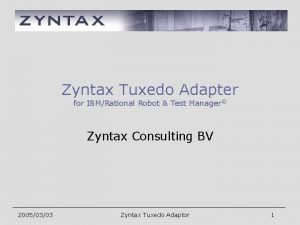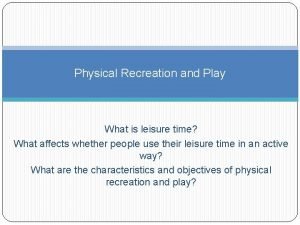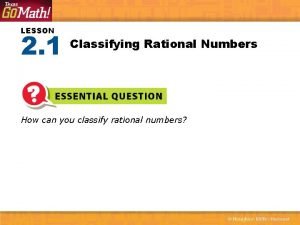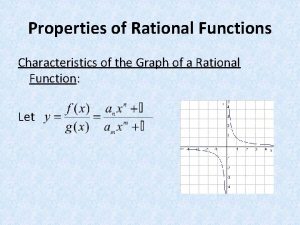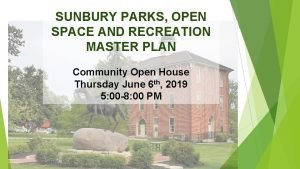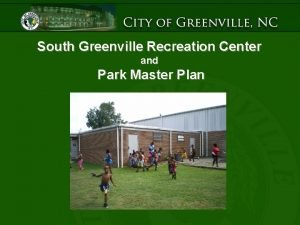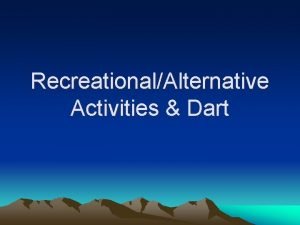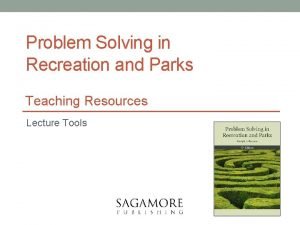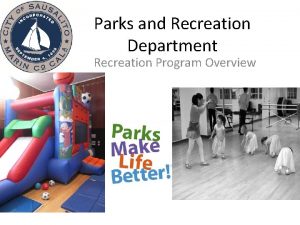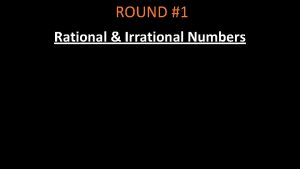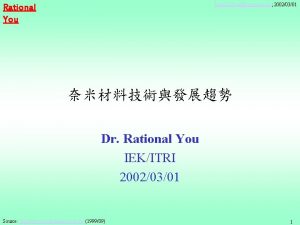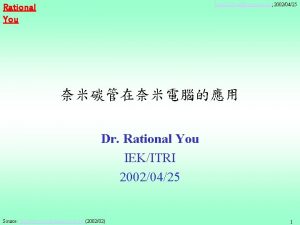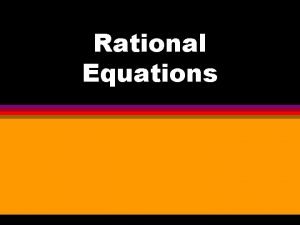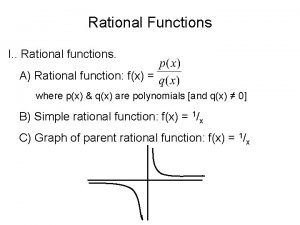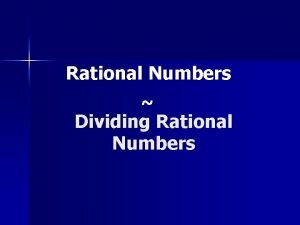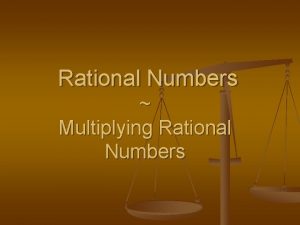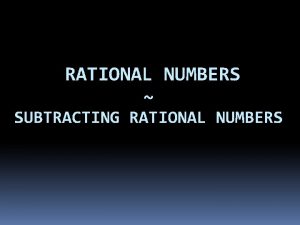Characteristics of Rational Recreation Characteristics of Popular Recreation













- Slides: 13

Characteristics of Rational Recreation Characteristics of Popular Recreation

local Natural simple Wagering Simple unwritten rules Characteristics of Rational Recreation Cruel, violent, rough Characteristics of Popular Recreation occasional rural Courtly/Popular

Regional national international local Purpose built facilities Natural simple Control of gambling Wagering Codified / NGB’s Simple unwritten rules Characteristics of Rational Recreation Respectable, fair play Cruel, violent, rough Characteristics of Popular Recreation regular occasional Urban / suburban rural Exclusive/elitist Courtly/Popular

Rational Recreations • • • if these are the characteristics … Purpose built facilities Codified / NGBs Respectability Regular Exclusive elitist Urban / sub urban Control of gambling Amateurism and professionalism Fair play • what brought about these changes?

Regional national international Codification / NGB’s Purpose built facilities Respectable Characteristics of Rational Recreations Fair play Regular Amateurism/professionalism Elitist / exclusive Gambling controlled Urban / suburban What cultural factors influenced these characteristics?

Better transport Technological advancement Regional national international Business/admin skills & ex PS boys Codification / NGB’s Purpose built facilities Respectable M/C influence Characteristics of Rational Recreations & Cultural Factors that influenced their development Fair play PS and M/C influence Amateurism/professionalism Class structure/ spectatorism Gambling controlled Improved law and order &m/c influence Urban / suburban industrial and urban revolutions Regular More free time & transport Elitist / exclusive Social class and gender discrimination

Rational Recreations – cultural influences • • • The transport revolution Communications revolution – post and telegraph Railways Enabled people to travel faster / further Distant teams / supporters could travel Led to need for standardised rules Meant kindly factory owners could organise excursions to the seaside Allowed people to travel to the country – maybe taking their newly invented bicycle along What would be the impact of trains on horse racing? • • • Improved living conditions Gradual process through 19 th. C Partly through limited govt action – eg Wash House and Baths Act 1846 = bathing facilities Some ‘paternalistic’ factory owners – improved conditions which also improved morale Earnings improved – hours at work reduced Development of Public Parks = facility for recreation

Rational Recreations – cultural influences • • The Class System Emergence of the middle class during 19 th C as important cultural force Class restricted opportunity – determined income, housing, lifestyle and sporting opportunities Would mean if you were a Gentleman Amateur or if you could be a professional M/c became administrators etc for many NGB’s 1860 -1890 m/c very resourceful – invented new activities to copy u/c – lawn tennis and cycling m/c had opportunity, provision and esteem for participation – but what of the working class? • • More Free Time Series of Govt Acts to reduce working hours Thought excessive hours were unhealthy 1870 – 1890 most workers gained Saturday half day Enabled time for spectatorism – some played sports 1870 skilled workers had 3 days paid holiday per year – 1890 – a week Wages improved & more rail enabled more travel

Rational Recreations – cultural influences • The Church • Medieval times – church was opposed to many pop recs • Protestantism 1700 – 1850 – Some Church Feast days and Wakes – but gradual decline due to drunken excesses – Protestant work ethic • 1850 – Evangelism / social Christianity – used sport for their ends – agreed with the values that sport could bringso church would promote sports – to keep people busy • NB – Bolton Wanderers…. • Women • Role of Victorian Women – inappropriate for a lady (M/C or U/C to exercise, sweat, display body • So sport was a no no! • Maybe even medically dangerous? • Lawn tennis helped • Towards end of 19 th C some relaxation towards ideas around women’s participation • What about Working Class Women?

JUNE 2012 How did each of the following factors influence the characteristics of mob football: a harsh lifestyle, widespread illiteracy, limited transport and communications? Describe two changes in the nature of ‘free time’ from the 18 th to 19 th. C. (5) Explain how the industrial revolution initially restricted opportunities for the lower class to take part in pre-industrial sports and pastimes. For a specific sporting activity, explain one way in which opportunities for working class participation had increased by the end of the 19 th. C (5)

Jan 2013 • Compare the characteristics of popular recreation with the characteristics of rational recreation. Explain how two late 19 th. C socio-cultural factors continue to influence sport and recreation today.

Analyse the impact of the railways on the development of Football in 19 th. C and comment on how transport and communications continue to impact on sport today. (10 marks) Min 250 words

Homework • Evaluate critically the impact of sociocultural factors that have influenced the growth and development of association football from 1850 to today. (20)
 Characteristics of rational recreation
Characteristics of rational recreation What is popular recreation
What is popular recreation How to solve rational equations and inequalities
How to solve rational equations and inequalities Ibm rational robot
Ibm rational robot What is leisure
What is leisure How to classify rational numbers
How to classify rational numbers Properties of rational function
Properties of rational function Wakulla rec park
Wakulla rec park Parks sunbury
Parks sunbury South lake leisure centre
South lake leisure centre South greenville recreation center
South greenville recreation center Family occupation recreation motivation
Family occupation recreation motivation Meaning of recreational activities
Meaning of recreational activities Recreation is a problem-solver
Recreation is a problem-solver
